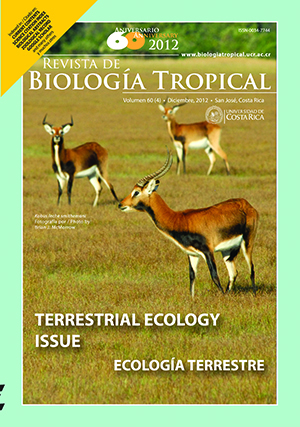Abstract
Black lechwe (Kobus leche smithemani) is a semi-aquatic medium sized antelope currently enlisted on the IUCN red list of endangered species and is only endemic to the Bangweulu basin of Zambia. Its population has significantly decreased due to floods that took place during the period 1930-1940 from over 250 000-15 000 leading the Zambian government to gazette all habitats of Black lechwe into state protected areas, and to estab- lish urgent management strategies needed to save the remaining population from extinction. Using retrospective data, our findings show that the population has increased from 15 000 animals in 1954 to 55 632 in 2009. The current population is estimated at 34.77% (55 32/160 00) of the carrying capacity of the Bangweulu basin. Although the Black lechwe is one of the 42 species offered for consumptive utilization by the Zambia Wildlife Authority (ZAWA), only 0.12% and 0.08% of the current stock was offered for safari and resident hunting annu- ally for the period 2005-2009, respectively. Annual quota utilization were estimated at 67% (n=37) and 81% (n=37) for safari and resident hunting, respectively. Hence, overall income obtained from utilization of Black lechwe is very low accounting for only 2.1% of the total revenue earned from wildlife utilization. Although the current population trend is showing a unit increase of 639 animals per year, it is still far below levels ideal for the lucrative utilization. In this study, we demonstrate that adverse ecological changes on wildlife species, can lead to their vulnerability and danger of extinction, and that their recovery to full carrying capacity may demand a considerable amount of time.Comments

This work is licensed under a Creative Commons Attribution 4.0 International License.
Copyright (c) 2022 Revista de Biología Tropical
Downloads
Download data is not yet available.






